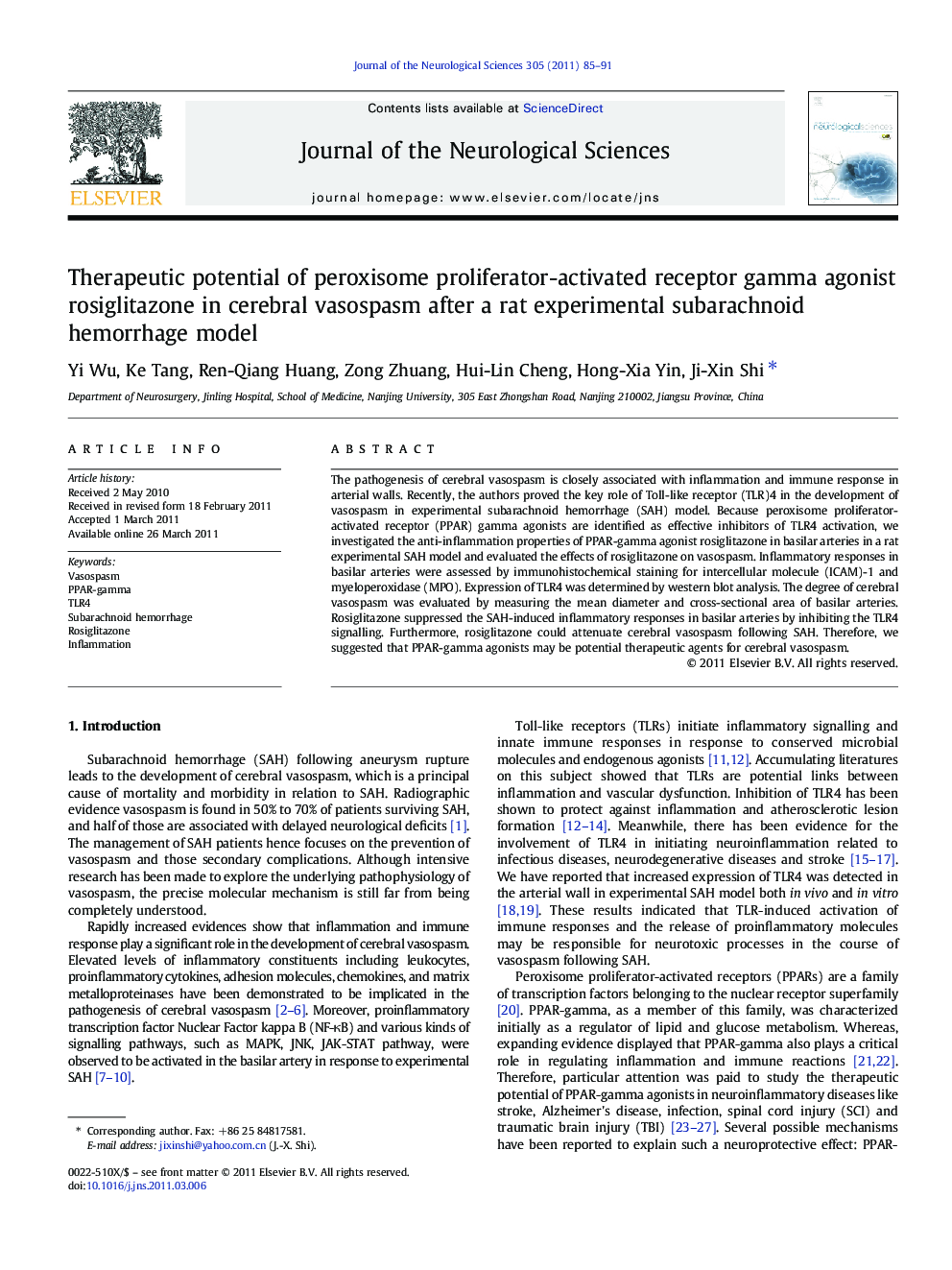| Article ID | Journal | Published Year | Pages | File Type |
|---|---|---|---|---|
| 1914339 | Journal of the Neurological Sciences | 2011 | 7 Pages |
The pathogenesis of cerebral vasospasm is closely associated with inflammation and immune response in arterial walls. Recently, the authors proved the key role of Toll-like receptor (TLR)4 in the development of vasospasm in experimental subarachnoid hemorrhage (SAH) model. Because peroxisome proliferator-activated receptor (PPAR) gamma agonists are identified as effective inhibitors of TLR4 activation, we investigated the anti-inflammation properties of PPAR-gamma agonist rosiglitazone in basilar arteries in a rat experimental SAH model and evaluated the effects of rosiglitazone on vasospasm. Inflammatory responses in basilar arteries were assessed by immunohistochemical staining for intercellular molecule (ICAM)-1 and myeloperoxidase (MPO). Expression of TLR4 was determined by western blot analysis. The degree of cerebral vasospasm was evaluated by measuring the mean diameter and cross-sectional area of basilar arteries. Rosiglitazone suppressed the SAH-induced inflammatory responses in basilar arteries by inhibiting the TLR4 signalling. Furthermore, rosiglitazone could attenuate cerebral vasospasm following SAH. Therefore, we suggested that PPAR-gamma agonists may be potential therapeutic agents for cerebral vasospasm.
